
views
- Grate a mild or sharp cheddar into a bowl. Shredding your cheese helps it melt more evenly.
- Let the cheese sit on the counter and come to room temperature for half an hour. This lessens the heating time, preventing burns.
- Microwave your cheese for 15-30 seconds at a time until it's completely melted. Mix the cheese with a spoon between each interval.
Melting Cheddar in the Microwave
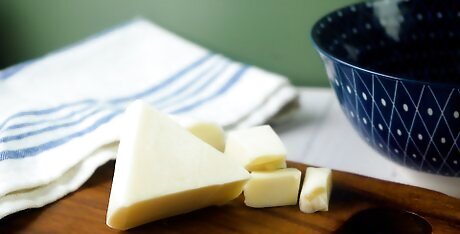
Start with mild or sharp cheddar. Cheddar cheese can be labeled mild, sharp, or extra sharp. The level of sharp indicates how long the cheese has been aged. The amount of aging increases as you go from mild to extra sharp. As the cheese ages, the texture of the cheese changes. Mild and sharp cheddar cheese have a smoother, creamier texture than extra sharp cheddar and will be easier to melt. It will require more heat to melt extra sharp cheddar then to melt less-aged cheddar cheese. Mild and sharp cheddar cheese have a higher moisture content than extra sharp cheddar.
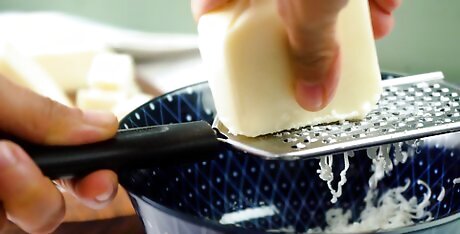
Shred the cheese. You can shred cheese with a knife, box grater, or food processor. Using a box grater is the most common and easiest method. Grasp the cheese firmly in your hand and press the short end firmly against the blades of the box grater. Using localized pressure, move the block of cheese up and down along the grater. It is best to shred the cheese while it is still cold. If you shred cheese when it is too warm, you will end up with mush. If you do not want to shred the cheese yourself, you can buy cheese that has already been shredded. However, the end result will be creamier and taste better if you shred it yourself. If you’re having trouble shredding the cheddar, put it in the freezer for 10-30 minutes to harden it.
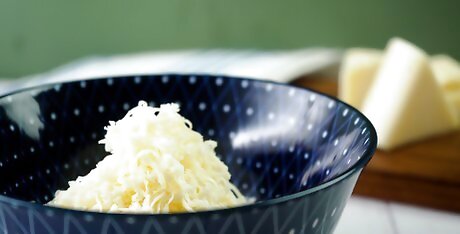
Bring the cheese to room temperature. Once grated, allow the shredded cheddar to remain out on the counter until it becomes room temperature. Doing this will lessen the length of time you’ll have to expose the cheddar to heat before it melts. Over exposure to heat will cause melted cheddar to become unpleasantly rubbery or greasy, so the less heat you have to use, the better.
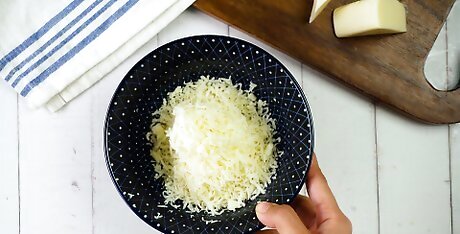
Place the cheese in a microwave-safe bowl. Pile the shredded cheddar into a bowl that can easily hold all of it, with room to spare. Do not place the cheese on a plate – when it begins to melt, it will run off the plate and you’ll have a melted mess to clean out of your microwave.
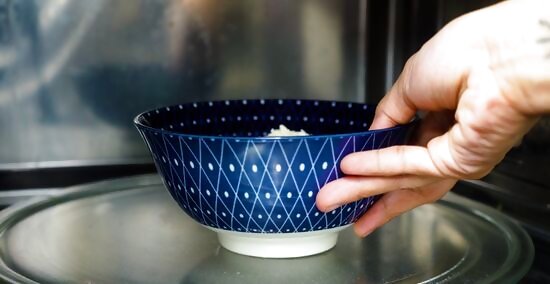
Set the microwave on low heat for 15 seconds. Place the bowl of shredded cheese into the microwave. Close the microwave door. Use the lowest heat setting that your microwave has. Cheese prefers to be melted at the lowest heat possible. Start with 15 seconds. Heating cheese at high temperatures sucks the moisture and fat out of the cheese. This will result in clumpy and/or greasy melted cheese.
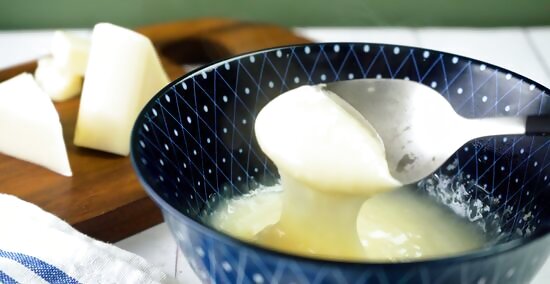
Continue with 15 to 30 second intervals until the cheese is melted. After the first 15 seconds, pull out the bowl and stir the cheese. Place it back in and set it for another 15 seconds. Continue in this manner until the cheese has reached the desired melted consistency. The cheese should still be somewhat stringy once melted. Over-cooked cheese will be hard and crispy.
Melting Cheddar on the Stovetop
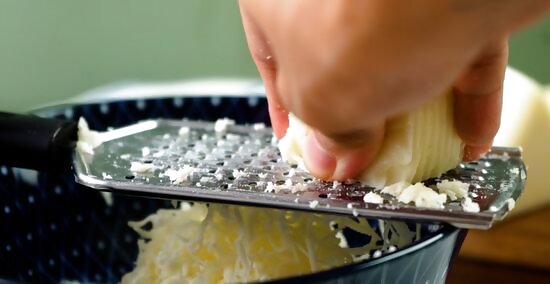
Shred the cheese. Use a box grater to finely shred the cheddar. Shred the cheese right out of the refrigerator, since it shreds better when it’s cold. If it’s giving you trouble, place the cheddar in the freezer for 10-30 minutes to harden it. Then attempt to shred it again. Feel free to use already-shredded cheddar for this. However, the cheddar usually has a better flavor if you grate it yourself from the block.
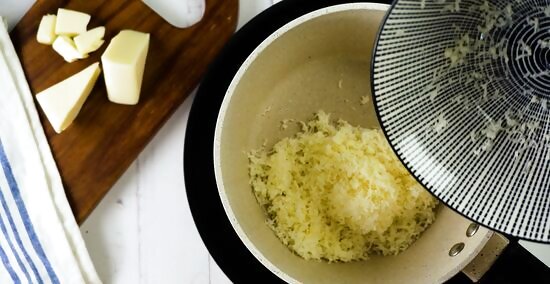
Place room-temperature shredded cheese in a non-stick pot. After shredding it, allow the cheddar to reach room temperature before you apply heat. The outcome will be smoother and the cheese will require less heat to melt at room temperature. Pile the shredded cheese into a non-stick pot with ample room that can easily accommodate it.
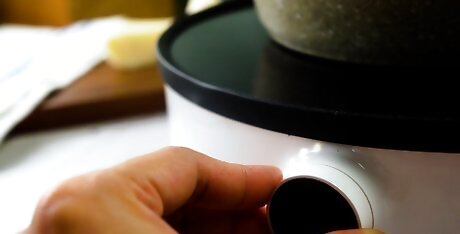
Use low heat. Put the pot of cheese over the lowest heat setting your stove will allow. Always melt cheese at the lowest heat possible. If you apply high heat to cheese, you risk losing the moisture and fat in the cheese, which results in lumpy or greasy cheese.
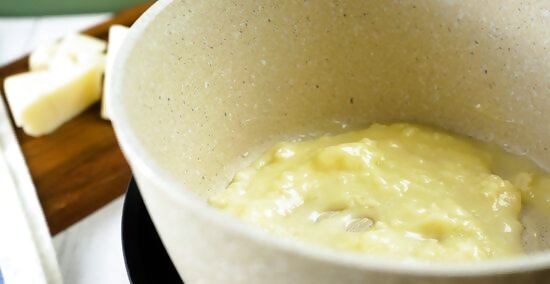
Watch the cheese closely and stir it frequently. Don’t leave cheese unattended on your stove, since it can melt and begin to burn very quickly. Stir the cheddar frequently to keep it moving around the pot. This will ensure the cheese is melted through evenly and prevent it from sticking to the pot and/or burning.
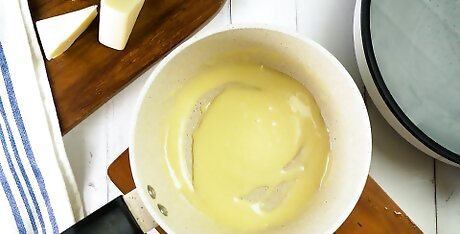
Remove the cheese from the heat. Try not to melt the cheddar any longer than is necessary, since this can result in a rubbery consistency and effect the flavor. Once the cheese melts and reaches a string-like consistency, stir it once more and then remove it from the heat immediately.
Steaming Cheddar Cheese
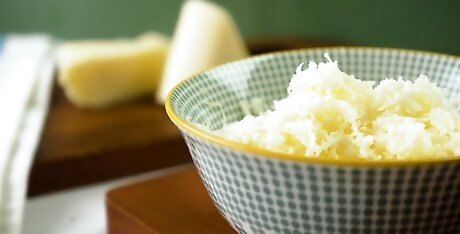
Place shredded cheese into small oven-safe bowls. Shred the cheddar straight out of the refrigerator, while it’s still cold. You can also use pre-shredded cheddar, if you prefer, although it will have a better flavor if you shred it yourself. Divide the cheese into several small, heat safe bowls. Ramekins would be a good choice. This method is best used when you only need to melt small amounts of cheddar. For example, you could steam-melt cheese to put on hamburgers for a rich, delicious flavor.
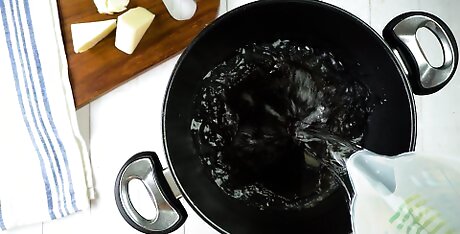
Add water to a saucepan and put it over high heat. Fill a saucepan one-third full or less with water and bring it to a rolling boil on your stovetop. Once the water reaches a boil, reduce the temperature of the burner to keep the water at a simmer.
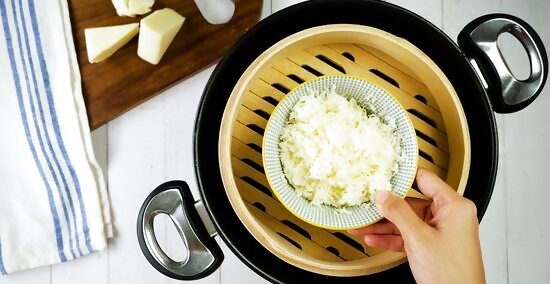
Place a steamer basket in the pot and add the cheese bowls. Situate a steamer basket into the saucepan, directly over the simmering water. Then, place the bowls inside the steamer basket. Let the water simmer for one to five minutes while your cheese melts. Check the cheese frequently. You do not want the cheese to melt too much. Ensure that the oven-safe bowls fit in your steamer basket before you transfer the cheese. Consider tossing the cheese with a couple tablespoons of flour if you want it to have a very smooth, sauce-like texture.
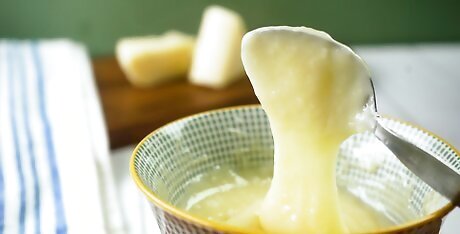
Finished.


















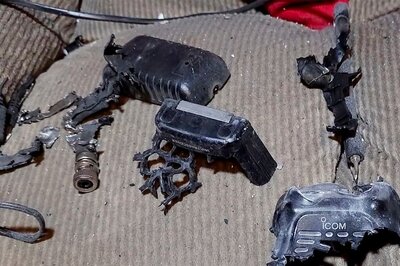
Comments
0 comment